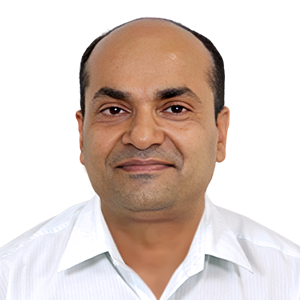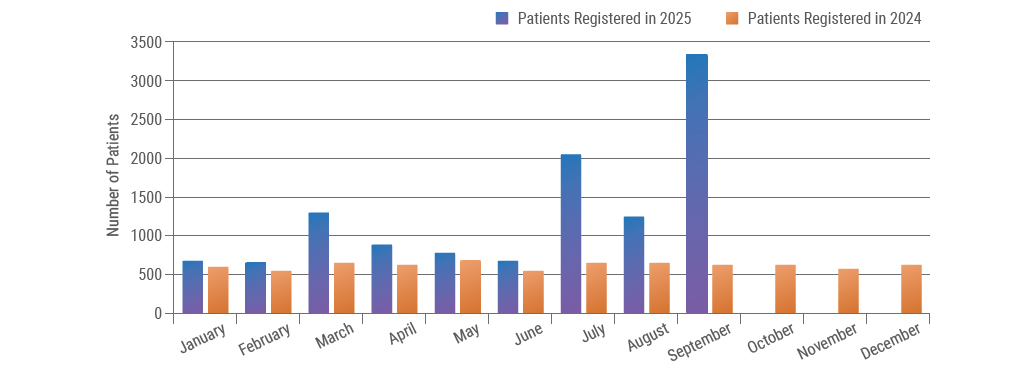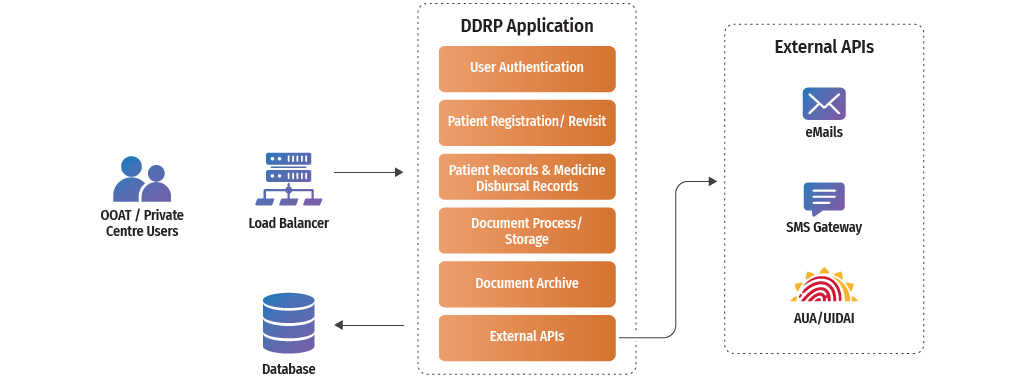Punjab’s Drug De-Addiction Registry Portal (DDRP) marks a major leap in the state’s fight against opioid addiction. Integrating Aadhaar-based biometric verification, AIpowered face recognition, and real-time drug inventory management, DDRP eliminates fake enrollments, prevents medicine pilferage, and ensures transparent treatment delivery. The unified digital registry allows patients cross-centre access and enables administrators to monitor anomalies instantly. By merging technology with governance, DDRP strengthens accountability, safeguards public resources, and builds renewed trust in Punjab’s de-addiction ecosystem.
Punjab has long been at the forefront of India’s struggle against opioid addiction. To confront this crisis, the state has built a wide network of Outpatient Opioid Assisted Treatment centres and partnered with private facilities to provide safe, affordable, and sustained treatment. These centres were designed to be places of hope — where patients could begin the difficult journey from dependence to recovery.
But alongside this progress emerged a set of hidden challenges. The very medicines meant to heal were vulnerable to pilferage and diversion. In some cases, patients were enrolled under duplicate identities; in others, gaps in manual record-keeping allowed leakages in the supply chain. Fake beneficiaries, ghost enrollments, and unmonitored drug inventories weakened the system, raising doubts about accountability and undermining the trust of both patients and citizens.
It was clear that treatment alone was not enough — the state needed a digital shield to secure the integrity of its de-addiction ecosystem. The Punjab Health and Family Welfare Department, with the support of NIC Punjab, responded with an innovation that combines governance with technology: the Drug De-Addiction Registry Portal (DDRP). By embedding Aadhaar-based biometric authentication, AI-powered face recognition, and real-time inventory management, DDRP ensures that medicines reach only genuine patients, every record is transparent, and every dose is accounted for.
This initiative represents more than a software system. It is a commitment to restoring confidence, protecting resources, and strengthening the fight against addiction through the power of digital governance.
The Challenge
While Punjab has invested in a network of Out-patient Opioid Assisted Treatment centres and private facilities, systemic gaps left the programme vulnerable:
- Pilferage and diversion: Medicines meant for patients often leaked into the illegal market due to weak supply controls
- Fake and duplicate enrollments: Ghost beneficiaries, forged identities, and multiple registrations consumed resources without delivering care
- Manual and fragmented data: Paper-based registers and isolated records resulted in duplication, delays, and poor visibility
- Restricted patient access: Patients were tied to a single centre, and treatment continuity was broken if medicines were unavailable there
- Weak accountability: Without real-time monitoring, anomalies were only discovered during periodic audits
The menace of drug abuse poses a serious challenge to the health and well-being of our society. Punjab has taken a significant step forward by leveraging advanced technologies such as Aadhaar-based biometric authentication and AI-enabled face recognition to secure drug distribution at de-addiction centres. The Drug De- Addiction Registry Portal (DDRP) is an exemplary initiative that not only prevents pilferage but also ensures transparency, accountability, and better patient care. This innovation demonstrates the power of digital governance in addressing complex social issues and stands as a model for replication across the country. I congratulate NIC Punjab and the Department of Health and Family Welfare for their commitment to harnessing technology for a healthier and drug-free society.

Shri Kumar Rahul, IAS
Principal SecretaryDepartment of Health & Family Welfare
The Solution
 Fig 6.1: Patients Registration Month & Year Wise
Fig 6.1: Patients Registration Month & Year Wise
The Drug De-Addiction Registry Portal (DDRP) was designed to directly address these pain points through a digital-first approach:
- Secure identity checks using Aadhaar-based biometric authentication, strengthened by AI-driven face recognition and geofencing
- Seamless integration with eAushadhi, ensuring real-time inventory management and eliminating medicine leakage
- A unified digital registry across the state that removes duplication and maintains transparent patient records
- Cross-centre treatment flexibility, allowing patients to collect medicines from any facility with stock, improving convenience and reducing dropouts
- Automated dashboards and alerts that give administrators live insights into consumption, anomalies, and stock movement
Together, these features transform DDRP into more than just a monitoring tool — it becomes a digital shield that safeguards resources, builds accountability, and strengthens patient trust in the de-addiction system.
Technologies Behind DDRP
 Fig 6.2: DDRP Application Software Architecture
Fig 6.2: DDRP Application Software Architecture
At the core of DDRP lies a secure, scalable, and cost-effective architecture, built using opensource technologies and integrated with national digital platforms. Each component has been designed with two goals in mind: patient safety and system accountability.
- Open-source foundation: Developed using PHP 8.3 and PostgreSQL 14.4, DDRP is lightweight, scalable, and economical, making it easy to maintain and expand
- Aadhaar Data Vault: Sensitive identity information is stored securely, ensuring compliance with privacy guidelines and preventing misuse of patient data
- AI/ML-enabled face authentication: A mobile application uses face recognition coupled with geofencing, verifying that patients are physically present at the centre during treatment
- Integration with eAushadhi: By linking directly with Punjab’s drug supply chain platform, DDRP connects patient dispensing records with medicine inventories in real time
- Automated digital workflows: From enrolment to medicine distribution, processes are digitized to replace manual registers, reducing errors and speeding up service delivery
- Real-time dashboards and analytics: Administrators gain visibility across centres, enabling faster decision-making and proactive interventions when anomalies appear
This technology stack ensures that DDRP is not just a monitoring tool, but a living system — continuously updating, self-correcting, and adaptable to the evolving needs of public health governance.
Benefits and Impact
DDRP has transformed Punjab’s de-addiction programme by replacing manual gaps with a transparent, digital-first system.
- Secure treatment – Aadhaar + AI checks ensure only genuine patients receive medicines
- No pilferage – Real-time sync with eAushadhi closes supply chain leakages
- Patient convenience – Cross-centre access reduces dropouts and improves continuity
- Efficiency – Digital workflows speed up enrolment and dispensing, cutting wait times
- Accountability – Dashboards and alerts provide real-time visibility for administrators
- Better planning – Centralized data enables forecasting and evidence-based policy
In short, DDRP safeguards medicines, builds trust, and improves patient outcomes through the power of digital governance.
Way Forward
The success of DDRP is only the first step in Punjab’s larger vision of technology-enabled public health. Going forward, the state plans to strengthen the system with predictive analytics for medicine demand forecasting, ensuring uninterrupted availability of essential drugs. The Aadhaar- based and AI-driven authentication framework will be extended to other health services where identity verification and accountability are critical. Integration with national digital health platforms will further enhance interoperability and continuity of care, while future upgrades may include tracking counselling sessions, relapse monitoring, and psychosocial support to make treatment holistic. Most importantly, Punjab aims to position DDRP as a replicable model for other states, demonstrating how digital governance can safeguard resources, improve patient outcomes, and restore trust in critical healthcare systems.
- Edited by:Vinod Kumar Garg
Author / Contributor

Vivek Verma Dy. Director General & SIO vivek.verma[at]nic.in

Dharmesh Kumar Sr. Technical Director & ASIO dharmesh.sharma[at]nic.in

Sanjay Puri Sr. Technical Director sanjay.puri[at]nic.in
- Tag:
- Internet
- Technology
- eGov
- Tech
State Informatics Officer
NIC Punjab State Centre
Room No 31, Punjab Civil Secretariat
Sector – 1, Chandigarh - 160001







